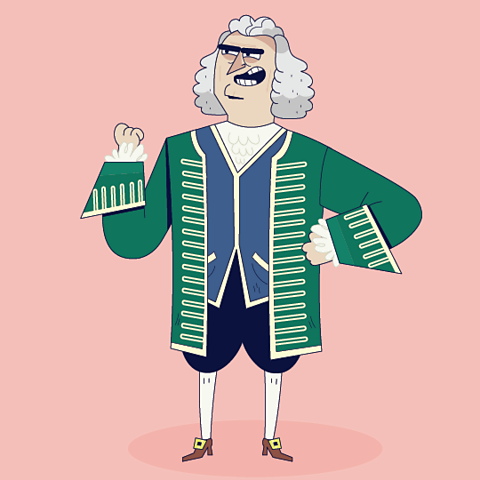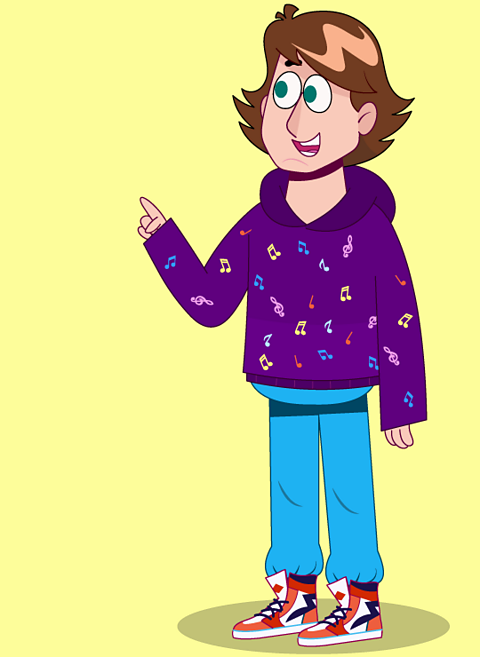Glossary
As you learn and practice music in Year 5 and 6, you will need to know and understand a number of key musical terms.
Below is a glossary of these words that you can come back to when needed.
Dimensions of music

Adagio - At a slow speed.
Allegro - At a brisk speed.
Crescendo - Gradually getting louder.
Decrescendo - Gradually getting quieter.
Forte - A dynamic marking telling you to play loudly.
Fortissimo - A dynamic marking telling you to play very loudly.
Legato - Smooth playing.
Melody and accompaniment - A melodic tune which is accompanied by another line of music.
Mezzo forte - A dynamic marking telling you to play moderately loudly.
Mezzo piano - A dynamic marking telling you to play moderately quietly.
Pianissimo - A dynamic marking telling you to play very quietly.
Piano - A dynamic marking telling you to play quietly.
Pitch - How high or low a note is.
Staccato - Short and spiky playing, the opposite of legato.
Tempo - The speed of the music.
Texture - The overall effect of how melody, harmony and rhythm are combined in a piece of music.

Composing music

Beat - A basic unit of time marking out the speed at which the music is played.
Clef - A symbol found at the beginning of a line of music to show how high or low the notes are.
Crotchet - A one beat note.
Dot notation - Visual symbols used to represent musical notes and chords.
Drone - A sustained sound, which could be a single note or a chord.
Major - A type of key with a set pattern of notes (the major scale).
Minim - A two beat note.
Minor - A type of key with a set pattern of notes (the minor scale).
Octave - An interval or gap of eight notes.
Pentatonic - A five note scale.
Quartet - A musical group of four players.
Quavers - A half beat note.
Rest - A period of silence.
Semibreve - A four beat note.
Semiquavers - An 1/16 beat note.
Score - A written piece of music using notation.
Staff notation - Note values are placed on a set of five lines, or in the four spaces within the lines, to denote their pitch. The lines (and spaces) are called a stave or staff. The higher the position of the note on the stave, the higher its pitch.
Stave - A set of five horizontal lines and four spaces on which musical notes are written.
Syncopation - Playing sounds in-between the main beats of the music.
Time signatures - Two numbers situated next to the clef. The top number tells you how many beats are contained in each bar and the bottom number tells you what type of notes they are.
Performing music

Arrangements - A reworking of a piece of music, so that it can be played by a different instrument or combination of instruments from the original.
Baroque - Music written between c.1600 and c.1750. Periods and eras of music overlap.
Classical - Music written between c.1750 and c.1830. Periods and eras of music overlap.
Chorus - A section of a song, normally containing a key musical idea.
Duet - A piece played or sung by two performers.
Echo - The repeat of a phrase.
Groove - Persistent repeated sounds, giving the music a feel of swing or movement.
Improvising - Creating music in real time, on the spot.
Partner songs - Songs with two (or more) complete melodies that can be sung separately but go together because they are the same length and follow the same harmony.
Playing by ear - The skill of âpicking outâ a phrase or melody on a pitched instrument without the support of written music.
Question and answer - Two distinct phrases which operate like a conversation, with the second phrase answering the first.
Romantic - Music written between c.1830 and c.1900. Periods and eras of music overlap.
Rounds - A song in which singers perform the same melody but at staggered starting points, producing overlapping harmony.
Solo - Music played by one player.
Trio - A musical group of three players.
Tuned instruments - Instruments that can produce different notes such as a xylophone, chime bars, glockenspiel, hand bells, violin, trumpet, flute, cello, piano.
Ternary - Music played in three main sections.
Triads - A three note chord.
Unison - Playing or singing the same notes together, at the same pitch.
Untuned percussion - Instruments that makes a unpitched sound when hit, shaken or scraped, such as a woodblock, maracas, guiro, cymbal, drum.
Verse - A section of a song.

Bitesize Primary games. gameBitesize Primary games
Play fun and educational primary games in science, maths, English, history, geography, art, computing and modern languages.

More on Sounds and Symbols
Find out more by working through a topic
- count3 of 4

- count4 of 4

- count1 of 4
